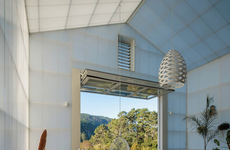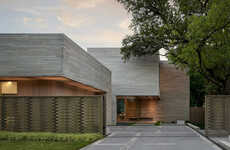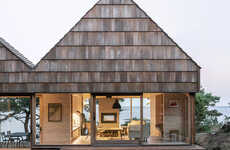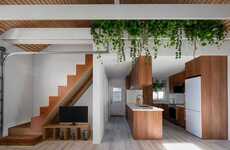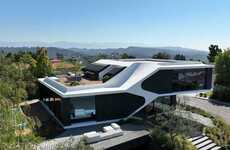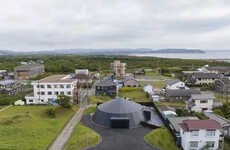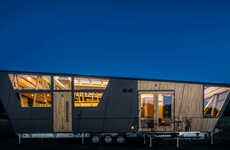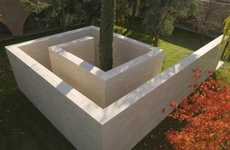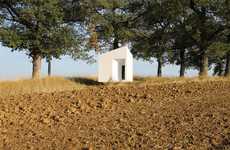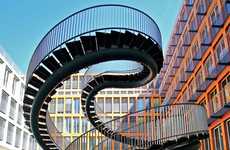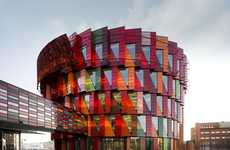
Leger Wanaselja Car Part Home Used Over 100 Vehicle Scraps
Senduran Bhakthakumaran — January 27, 2012 — Eco
References: inspirationgreen & gizmag
Most architectural homes would be designed with carefully manufactured parts, however this Leger Wanaselja car part home is recognized for its structure that used over 100 car roofs. The designers wanted to make a competitive designer home while maintaining a strictly environmental building plan.
The home has been built in Berkeley, California and the car scraps were found in local junk yards. The home carries no trace of being built partly upon recycled material, which goes to show that a little knowledge with home design and a hell of a lot of creativity can really put a roof over one's head.
The Leger Wanaselja car part home was built using low-toxicity materials and is fully furnished with wooden products. The house is green from top to bottom.
The home has been built in Berkeley, California and the car scraps were found in local junk yards. The home carries no trace of being built partly upon recycled material, which goes to show that a little knowledge with home design and a hell of a lot of creativity can really put a roof over one's head.
The Leger Wanaselja car part home was built using low-toxicity materials and is fully furnished with wooden products. The house is green from top to bottom.
Trend Themes
1. Sustainable Architecture - Disruptive innovation opportunity: Explore the use of alternative materials, such as recycled car parts, in architectural design to create eco-friendly structures.
2. Creative Building Techniques - Disruptive innovation opportunity: Push the boundaries of traditional construction methods by utilizing unconventional materials, like car scraps, in the creation of unique and visually striking buildings.
3. Environmentally-friendly Housing - Disruptive innovation opportunity: Develop innovative approaches to constructing homes that prioritize sustainability and minimize the environmental impact of building processes and materials.
Industry Implications
1. Architecture and Design - Disruptive innovation opportunity: Lead the charge in developing sustainable and environmentally conscious architectural designs that incorporate recycled materials.
2. Construction and Real Estate - Disruptive innovation opportunity: Embrace and promote unconventional building techniques and materials to offer eco-friendly and visually appealing options for residential and commercial construction projects.
3. Eco-friendly Products - Disruptive innovation opportunity: Create and market furniture and household products made from sustainable materials, like recycled wood, to meet the demand for environmentally friendly alternatives.
6
Score
Popularity
Activity
Freshness


